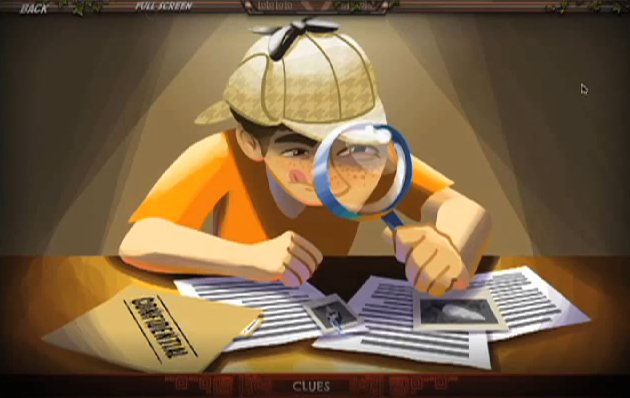New technology is allowing teachers to move from a “one size fits all” model to a more personalized approach that focuses on the individual needs of each student. Initiatives such as 1:1 programs and Bring Your Own Device lessons are helping teachers create a learning environment where kids can learn at their own pace and in their own way. This is especially important at the middle school level, where teachers often struggle to get kids involved and engaged in new content.
Howard Gardner, author of Frames of Mind, which challenged the status quo concerning intelligence and how it is measured. He speaks of the need to “individualize and pluralize” learning to maximize a lesson’s reach while taking full advantage of each student’s inherent abilities. That’s a tall order, especially considering the strains our teachers are under: crowded classrooms, limited resources, emphasis on testing, time constraints, and more.
Digital games can, and are, helping teachers to ease these strains. Recent studies show that teachers are regularly using digital games in the classroom and that students are benefiting. According to a recent report from the Games and Learning Publishing Council (GLPC), “the ‘games movement’ is now mainstream.” That study found that 74% of the 694 K-8 teachers surveyed use digital games in their classrooms, many of them weekly. Another study from NYU indicates that the built-in competitive aspect of digital gaming has measurable benefits for student performance (Research: Competitive Games Can Drive Student Engagement).
A Solution for the Struggling Student
For students who struggle in a standard learning environment, teachers report that digital games help low-performing students catch up and motivate them to learn more (Teachers Surveyed on Using Digital Games in Class). Digital games not only improve student performance, but positively impact student behavior and attendance (Daily Edventures June 10, 2014).
Games are inherently flexible; they encourage experimentation, trial and error. They track progress and give instant feedback, allowing the student to take control of the learning process privately. The immediate feedback in games lets players determine for themselves what they need to do differently, allowing them to internalize the lesson. Students can practice skills they feel uncertain about, or move ahead to new things while the teacher focuses on students who are struggling with a topic.
Many education-specific games also allow teachers to see the student’s progress so they can tailor lessons or extra work to specific needs. When students are put in an environment in which they can learn their way without fear of judgment or penalty, they become what every teacher strives for: independent learners.
Clearly, games have become an accepted teaching tool. Now the conversation is shifting from “are games worthwhile” to “how do we use games effectively?” Teachers recognize the value of digital games, but obstacles remain in the full integration of games into curricula. As teachers have discovered, not all games are the same. It can be a challenge to navigate the plethora of games that claim to be educational. As a result, teachers arereporting that the biggest obstacle to game-based learning is finding quality games that align with their curriculum.
According to the GLPC report, 80% of teachers who use games have a hard time finding curricularly aligned games, and 39% don’t even think enough of these games exist to make it worth looking for them. Game development companies are certainly reading these reports and working to fill that gap. But in the meantime, how is a teacher to know whether a game will successfully assist a student in accomplishing deeper learning, or any academic learning at all?
How Games are Being Used in the Classroom
The answer lies in part with how games are being used for teaching. The vast majority of teachers are using what are called “short form games” in their classrooms. A better term might be “reinforcement games,” since their focus is on improving skills. Some of the most effective educational games are reinforcement games, which prepare students for classroom instruction through cognitive exploration and engagement. These games have short play-times, which makes it easier to include them in traditional classrooms. But are these the best games for deeper, meaningful learning?
For some subjects (math comes to mind), the best way to learn is to do something, over and over. This sort of repetitive drill can quickly get boring, however. This can cause students to disengage, even when the drill is presented in game format. Without context or clear future purpose, students have little motivation to complete the worksheet, parse another sentence or read another essay that has nothing to do with their lives (sound familiar?).
What are Long-Form “Teaching” Games?
One solution to this eternal problem is “long-form games” (teaching games) that are designed to help a student along an academic course. This type of game offers context, allowing kids to truly internalize concepts on their way to deeper understanding. These games are meant for long-term play, which can make it difficult for teachers to work them into a traditional school day; however, the improvement in student engagement and active thinking makes it well worth the effort.
The best teaching games are more than just a content-delivery system. They cross curriculum boundaries, forcing students to apply what they have learned in multiple classes to solve problems in creative ways. Students internalize concepts while they exercise their critical thinking skills.
Interactive, cross-curricular games encourage student-driven learning. They allow students to explore while providing situations in which the player can choose a path forward. Students control the level and pace of exposure to new information. The best learning games instill a level of confidence and willingness in a student that makes teaching and learning look effortless.
Long-form games are purpose-aligned, meaning they offer much needed context for students and encouraging them to master new content and curriculum standards. They inspire students to find answers in their own way, leading to deeper understanding and better retention of the material. When children use skills from multiple disciplines to solve real-world problems they become critical thinkers—a vital ability for life success. The education paradigm is shifting and games will play an intrinsic roll.











